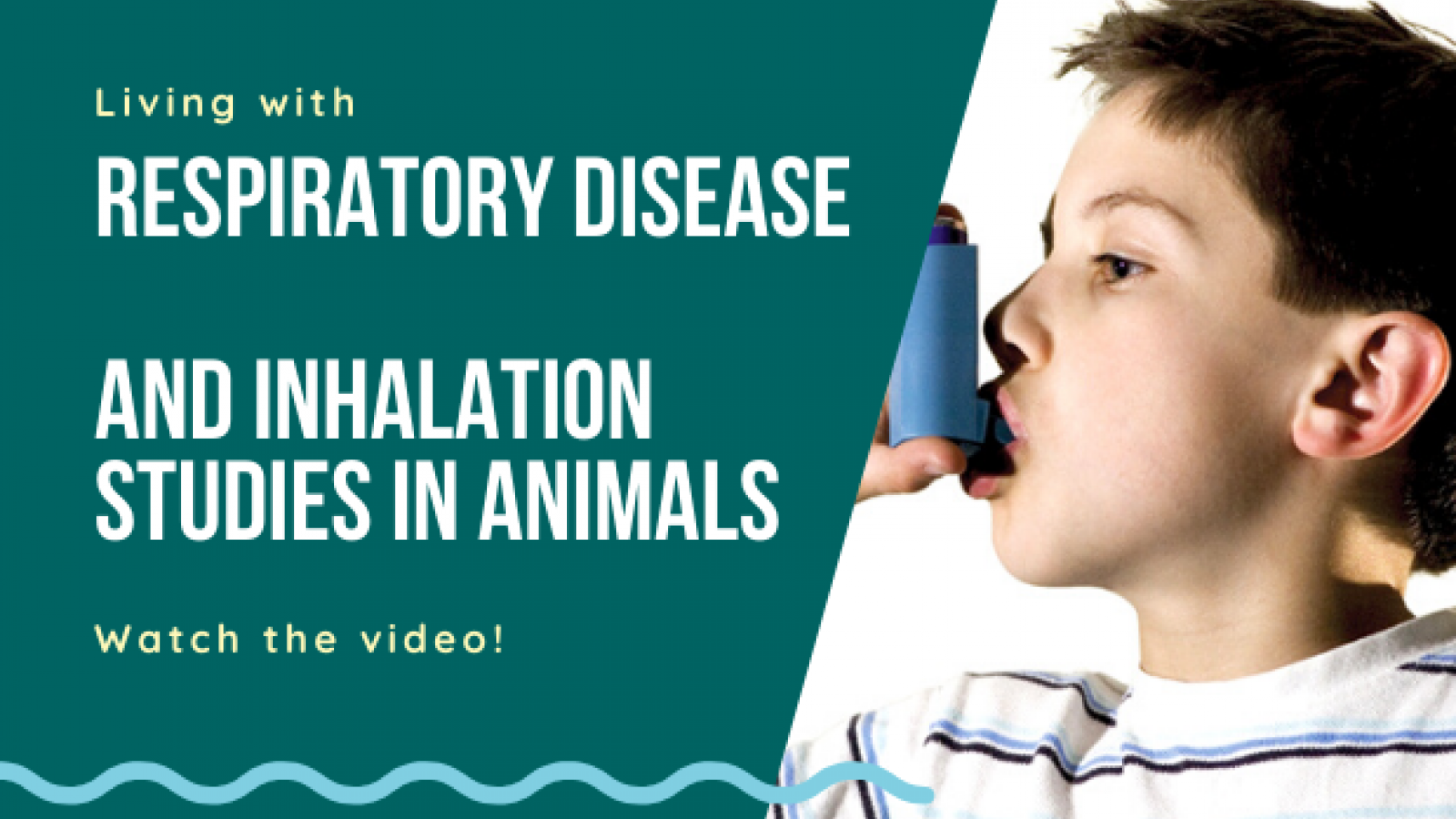Respiratory disease: asthma and chronic obstructive pulmonary disease (COPD)
On average, 3 people die from an asthma attack in the UK every day. In 2017 (the most recent data available) 1,484 people in the UK died from an asthma attack in the UK.*
Around 30,000 people with COPD die annually in the UK.**
5.4 million people in the UK are currently receiving treatment for asthma: 1.1 million children (1 in 11) and 4.3 million adults (1 in 12). Around 1 million people are being treated for COPD. The treatments people suffering from a respiratory disease receive came from research with animals including guinea pigs, rats and dogs.
In the short film below we hear about the experience of having asthma from Tim Wilson and about how animal research has contributed to treating asthma from Professor Clive Page.
An eighth of all deaths in the EU are caused by respiratory disease, and treating this disease is very costly to health systems. In asthma where a combination of inflammation, constriction, and fluid in the lungs can cause extreme distress, drugs are used to relax airway smooth muscle and reduce the inflammation that can lead to mucus plugging up airways.
In COPD smoking and air-pollution leads to bronchitis and emphysema where there is irreversible destruction of the alveoli. Current steroid drugs don’t reduce loss of lung function in COPD over time so new approaches are necessary.
Clive Page gave the 81st Paget Lecture (see below) on how animals have contributed to our understanding and treatment of respiratory diseases. It is a fine historical review of how modern asthma drugs came about and comes right up to date by introducing the latest medicine, Ensifentrine.
He describes work first on guinea pig trachea tissue, then in guinea pigs, to demonstrate efficacy of the new compound followed by toxicology and dose testing in rats and dogs to allow the best dose to be selected for people.
You can see this type of testing of drugs delivered to the lung in rats and dogs in the following two videos prepared for internal training in a pharmaceutical company here. These animals are not receiving Ensifentrine.
Ensifentrine is a dual inhibitor of the phosphodiesterase 3 (PDE3) and phosphodiesterase 4 (PDE4) enzymes. This dual inhibition enables it to combine bronchodilator and anti-inflammatory properties in one compound, differentiating it from existing drug classes used to treat COPD, including corticosteroids, beta2-agonists and anti-muscarinics. Ensifentrine is now in class 2 drug trials. ***
Time will tell whether this drug will control the symptoms of lung disease more effectively. Clive concluded his lecture by describing the emerging understanding of how platelets and eosinophils interact in disease, another potential mechanism for medicines to target.
How animals have contributed to our understanding and treatment of respiratory diseases
Professor Clive Page, 81st Paget Lecture, 2017
* Asthma UK: https://www.asthma.org.uk/about/media/facts-and-statistics/
** British Lung Foundation: https://statistics.blf.org.uk/copd
*** http://www.veronapharma.com/our-science/
Last edited: 3 March 2022 15:05




